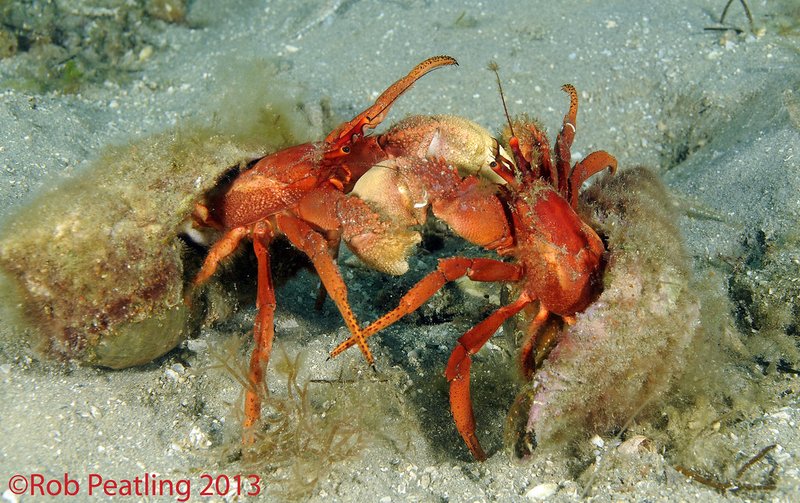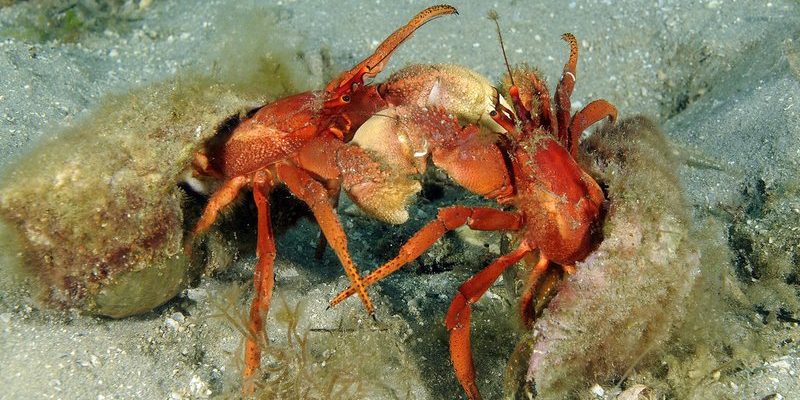
Imagine watching a couple of hermit crabs get together—it’s much like watching a little love story unfold at the beach. First, they have to find each other, and then they engage in a series of courtship dances. But that’s just the start! Let’s dive deeper into how these charming little creatures reproduce and what you need to know if you’re thinking about breeding them yourself.
Understanding Hermit Crab Mating Habits
Hermit crabs have a rather unique approach when it comes to mating. They can be a bit picky about their partners and often engage in fascinating courtship rituals. During the mating season, which varies based on their environment, male hermit crabs will seek out females. When they find a suitable mate, they perform a series of dances and physical displays to attract one another.
The male will often try to impress the female by waving his claws and moving in a circular motion. This part of the process is
super important because the female needs to be fully convinced before she will even consider mating. You might think of it like a charming dance-off—a little bit of flair goes a long way!
Once the female is receptive, they will mate, and this is where things can get pretty interesting. Hermit crabs don’t have a typical mating system. Instead, they will actually mate in a position that resembles a “T” formation. This process can last for hours, but it’s essential for ensuring successful fertilization.
Egg Laying and Development
After mating, things get exciting! The female hermit crab will carry the fertilized eggs in her abdomen for about a month. This is like a little waiting period where the future hermit crabs are growing and developing. The number of eggs can range from hundreds to thousands, which is quite impressive and speaks to their survival instincts.
You might be wondering where she lays these eggs. If she’s in a suitable environment, she’ll head to a damp area near the ocean, where she will release them into the water. This watery release is crucial because the eggs need saltwater to develop properly. They are tiny, resembling little floating specks, and they will hatch after about 4-6 weeks.
Once the eggs hatch, the tiny hermit crab larvae, called zoea, will enter the plankton stage. This stage is when they are most vulnerable, relying on ocean currents to help them find food and grow. Isn’t it fascinating to think about how small and delicate they start out?
The Importance of the Environment in Breeding
The environment plays a huge role in the reproductive success of hermit crabs. If you’re considering breeding them, you need to recreate their natural conditions as closely as possible. This means ensuring your crabs have access to both fresh and saltwater, as well as a suitable temperature and humidity level.
Adding a shallow dish of saltwater is crucial. This allows the female to release her eggs in a safe space, mimicking their natural habitat. The right temperature is usually around 75-85°F (24-29°C) with high humidity levels, similar to a tropical environment. You can achieve this by misting their habitat regularly and using a heater if necessary.
Moreover, providing plenty of hiding spots and shells is important for the health and happiness of your crabs. When they feel secure, they are more likely to reproduce successfully. Remember, if they don’t feel safe, they’re not going to want to mate!
Challenges in Breeding Hermit Crabs
Breeding hermit crabs can be an exciting journey, but it also comes with its share of challenges. Many pet owners find it difficult to create the ideal environment for breeding. Factors like water quality and temperature can greatly affect the survival rate of the larvae. If conditions aren’t just right, eggs might not hatch, or the larvae may not survive their plankton stage.
Another challenge is recognizing when your hermit crabs are actually ready to breed. Not every hermit crab will breed in captivity, as they often rely on environmental cues. If you don’t have the right setup or conditions, you could miss the chance entirely!
Additionally, once the larvae hatch, they require very specific care. You’ll need to provide specialized foods and maintain water quality to give them a fighting chance at growing into healthy adult crabs. It can feel a bit like being a parent, constantly worrying if you’re doing everything right!
Caring for Baby Hermit Crabs
If all goes well and your hermit crabs have successfully bred, you’ll want to know how to care for those little hatchlings! The initial stage is all about providing the right food and environment. The baby hermit crabs will be very tiny, and they’re going to need a specific diet. You can use powdered foods designed for hermit crab larvae or finely crushed flakes. These options are great because they’re easy for the tiny crabs to consume.
As they grow, you’ll need to gradually introduce them to more solid foods like fresh fruits and vegetables. Make sure to provide a mix of calcium sources as well because this is crucial for their shell development.
During this stage, keep an eye on the water quality. It’s best to use a sponge filter to maintain cleanliness without harming the tiny critters. And remember, patience is key! It takes time for them to grow, and you’ll want to create a safe, healthy environment to ensure their success.
Breeding and reproduction of hermit crabs can be a wonderfully rewarding experience, but it requires a good deal of knowledge and care. From the courtship dance to the delicate stages of larval development, each step is fascinating and important. Creating the right environment, recognizing the challenges, and providing proper care can make all the difference in raising healthy hermit crab babies.
So, if you’re considering diving into the world of hermit crab breeding, embrace the journey! With the right setup and a little love, you might find yourself not just a pet owner but a hermit crab parent. It’s a lot like tending to a small garden; with care, patience, and the right conditions, you can help new life flourish. Happy breeding!

